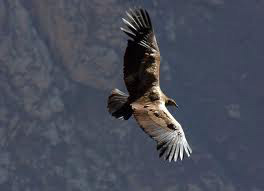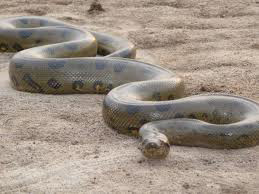The genes that code for proteins in our human species are remarkably similar, often nearly identical, to those of many other species across the animal kingdom. It makes sense, considering that throughout our natural history human beings and other animals have shared the same environments and competed for the same resources in a quest for survival. Having so much in common with the other animals in our kingdom, we can consider that many strategies that they have developed to aide survival can help us too, and can even help awaken our own Zen practice.
Nature teaches beasts to know their friends ...
-- William Shakespeare
The genes that code for proteins in our human species are remarkably similar, often nearly identical, to those of many other species across the animal kingdom. It makes sense, considering that throughout our natural history human beings and other animals have shared the same environments and competed for the same resources in a quest for survival. Having so much in common with the other animals in our kingdom, we can consider that many strategies that they have developed to aide survival can help us too, and can even help awaken our own Zen practice.
To poise on a cliff face
 In the Golden Eagle’s karmic causes, it swoops at Wild Mountain Goats on cliff ledges so they it will fall and perilously arrive as prey on the canyon floor. In reality the Eagle is poised and orbits the prey with a focus that is imploding with precision. The eye of the intensely gazing Eagle remains in focus during its entire descent on the target. But the Goat is often alert and aware of the Eagle’s intentions and will stand firm on the edge of a vertical cliff face, despite the possibility of any perilous outcome.
In the Golden Eagle’s karmic causes, it swoops at Wild Mountain Goats on cliff ledges so they it will fall and perilously arrive as prey on the canyon floor. In reality the Eagle is poised and orbits the prey with a focus that is imploding with precision. The eye of the intensely gazing Eagle remains in focus during its entire descent on the target. But the Goat is often alert and aware of the Eagle’s intentions and will stand firm on the edge of a vertical cliff face, despite the possibility of any perilous outcome.
This exchange of energies can awaken us to our own practice of alertness in Zazen. We too can remain poised, holding firm while remaining seated ‘as tall as a mountain’. In this strong position we can avoid the phenomena of sleepiness or the onslaught of circling thoughts. With cultivation and precision, we remain balanced and not so easily thwarted. We can use this time to focus intently on our practice.
Launching into the abyss
 To imagine the flight of a condor is to imagine the soaring and circling of a creature with an enormous wingspan. Despite its ability for sublime orbiting in space, this aerobat must be already on high ground before safely and effectively launching into its aerial reconnaissance. Where the condor will perform karmic swoops at food targets on the plains, it must then find space on higher ground, in order to perform a re-launch and a return into its aerobatic manoeuvres.
To imagine the flight of a condor is to imagine the soaring and circling of a creature with an enormous wingspan. Despite its ability for sublime orbiting in space, this aerobat must be already on high ground before safely and effectively launching into its aerial reconnaissance. Where the condor will perform karmic swoops at food targets on the plains, it must then find space on higher ground, in order to perform a re-launch and a return into its aerobatic manoeuvres.
This preparation for launching reminds us to be in a comfortable position before ascending into meditation. It asks us to be willing to deal with low level thoughts, mental formations and defilements, before the mind can find its ‘space’ in the lofty ‘unborn’.
The feline dilemma
 The ‘eye of the tiger’ has been used as inspiration to remain poised and ready to strike at the first opportunity. This of course is a great reminder to maintain mindfulness throughout our daily activities. Yet the tiger also has a life of many distractions. The Chinese for example, will recognise that the tiger is passionate and powerful, but also quite unpredictable. Stray male tigers for example, are seen as the enemy by tigresses due to their random attacks on non-sired cubs. In the mainstream, alpha males are constantly assessing their territory readily available to strike at contenders, while females stake out hunting areas to rival other tigresses. To maintain this unpredictable and fear-based existence, evolution has provided tigers with two sensory features.
The ‘eye of the tiger’ has been used as inspiration to remain poised and ready to strike at the first opportunity. This of course is a great reminder to maintain mindfulness throughout our daily activities. Yet the tiger also has a life of many distractions. The Chinese for example, will recognise that the tiger is passionate and powerful, but also quite unpredictable. Stray male tigers for example, are seen as the enemy by tigresses due to their random attacks on non-sired cubs. In the mainstream, alpha males are constantly assessing their territory readily available to strike at contenders, while females stake out hunting areas to rival other tigresses. To maintain this unpredictable and fear-based existence, evolution has provided tigers with two sensory features.
The first is tactile whiskers. This enables felines to find their way or judge the shape of obstacles if their vision is impaired. The second is a unique organ concealed within their mouth. By adjusting the shape of their face this organ is exposed and used as a detection tool for other marauding tigers.
This obsession of sensory survival may remind us of our discoveries in the Heart Sutra, where our perception of separateness, created by our senses, should be seen as illusionary. When we practice meditation earnestly, we discover that there are no forms or conditions that have an independent or separate existence. Since everything is inter-dependently co-arising, nothing can truly be separated, divided or put into categories. These types of hindrances to mindfulness can then be dissolved instantly. So here our cousin the tiger can be a provident reminder to go beyond all feelings and perceptions, if we wish to relieve the suffering of our own incessant monitoring.
The Serpent’s obsession with sensing and grasping
 The anaconda also has device for sensory purposes. This is called the Jacobson’s organ which detects a range of environmental changes, like temperature or prey in its proximity. Like its relatives, this giant serpent extends and retracts its tongue to analyse information using this organ. Herein lies the snake’s incessant example of ‘monitoring’ and is also a strong reminder for us to drop all perceptions and consciousness, if we have the wish to make any real progress in our practice.
The anaconda also has device for sensory purposes. This is called the Jacobson’s organ which detects a range of environmental changes, like temperature or prey in its proximity. Like its relatives, this giant serpent extends and retracts its tongue to analyse information using this organ. Herein lies the snake’s incessant example of ‘monitoring’ and is also a strong reminder for us to drop all perceptions and consciousness, if we have the wish to make any real progress in our practice.
In contrast, one can also use other anaconda features to embellish our cultivation. It is a powerful constrictor that grasps and strangles its prey. Its angled teeth do not let go of its conquest, even for a second. It latches on until it fully administers its constriction and the prey is immobilised. This is a reminder of our own Zen practice where we speak of holding onto “Great Doubt”. When we hold onto it like a koan or hua-tou we begin to notice how our concurrent causes extinguish themselves to where they too become immobilised. From here we may realise by sheer effort, the enigmatic experience of our true nature.
The anaconda also swallows its prey whole, which teaches to take in knowledge and power. This is a reminder that we too are powerful and will need to incubate that power in readiness for the appropriate time, when random thoughts and feelings plague our mindfulness.
In Buddhist practice, we not only consider that our animal cousins are evolving toward their own true ‘Buddha Nature’ but we also realise that they are drawn to wild and remote areas for reasons not unlike our own. We realise that they seek this solace to rest from their own tensions of incessant monitoring.
The difficulty for us humans, who dwell in the phenomenal world, is that the concept of animals gravitating towards enlightenment is more of an extreme notion at best. Yet when viewed with inter-connectedness, animals are works of art, more wondrous than anything arising from an individual creation or personal identity. They show us poise, intensity, resilience and patience, as well as persistence, dignity and humility. How is it then possible to overlook the important teachings of our precious animal kingdom, no matter how wild and unpredictable? Perhaps as we begin to notice their pervading ‘Buddha Nature’ we can catch a glimpse of ours, as it pervades our own wild animal instincts.
